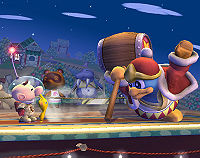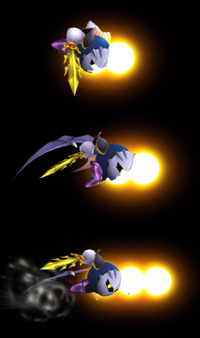| Welcome to SmashWiki! Log in or create an account and join the community, and don't forget to read this first! |
| Notices |
|---|
| The Skill parameter has been removed from Smasher infoboxes, and in its place are the new "Best historical ranking" and "Best tournament result" parameters. SmashWiki needs help adding these new parameters to Smasher infoboxes, refer to the guidelines here for what should be included in these new parameters. |
| When adding results to Smasher pages, include each tournament's entrant number in addition to the player's placement, and use the {{Trn}} template with the matching game specified. Please also fix old results on Smasher pages that do not abide to this standard. Refer to our Smasher article guidelines to see how results tables should be formatted. |
| Check out our project page for ongoing projects that SmashWiki needs help with. |
Pivot grab: Difference between revisions
m (→In Melee) |
|||
| Line 10: | Line 10: | ||
==In ''Melee''== | ==In ''Melee''== | ||
Pivot grabs in ''Melee'' are done out of the turn animation after the initial dash not the run. Their hitboxes and animation is no different from normal standing grabs, though and there is only | Pivot grabs in ''Melee'' are done out of the turn animation after the initial dash, not the run. Their hitboxes and animation is no different from normal standing grabs, though, and there is only one frame during the dash dance turnaround where it can be done. Regardless, the ''Melee'' pivot grab is still very useful, often being used to extend hard chain grabs or space around [[Reflector]]s for a grab. | ||
==External links== | ==External links== | ||
Revision as of 19:03, May 19, 2014


A pivot grab (ふりむきつかみ Furimuki tsukami, Turned-around grab) is a type of grab that any character can use. While dashing, a character can pivot in the other direction, but at that exact same moment of pivoting, the player can press the grab button. In Brawl, this results in a grab that has longer reach than most normal grabs. The pivot grab can help grab opponents that constantly roll behind opponents that are dashing, and is useful as well as if a character predicts an unsafe approach.
Pivot grabs generally have less ending lag than a character's dash or standing grab. For some characters with extended grabs, this lag is substantially shorter; Yoshi, Ivysaur, and Lucas have pivot grabs that are so much faster to end than their normal grabs that it is their preferred method of grabbing. However, other characters with extended grabs (Zero Suit Samus, Link, and Toon Link) do not have this advantage, with pivot grabs not much faster than their normal ones.
Characters with high running speed and low traction cover more ground while pivot grabbing, resulting in a minor range increase.
In Melee
Pivot grabs in Melee are done out of the turn animation after the initial dash, not the run. Their hitboxes and animation is no different from normal standing grabs, though, and there is only one frame during the dash dance turnaround where it can be done. Regardless, the Melee pivot grab is still very useful, often being used to extend hard chain grabs or space around Reflectors for a grab.